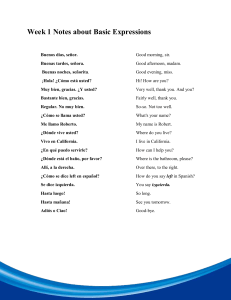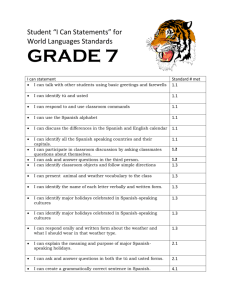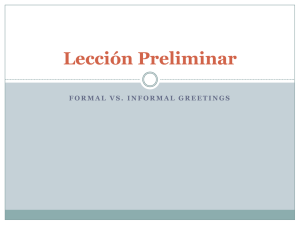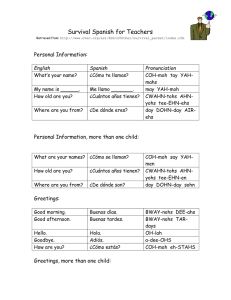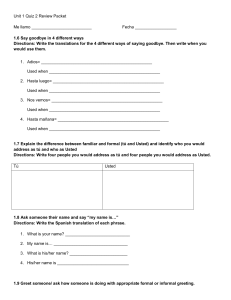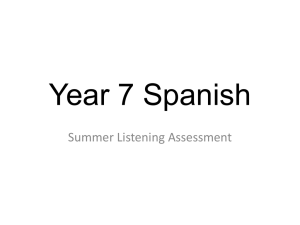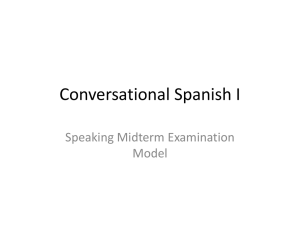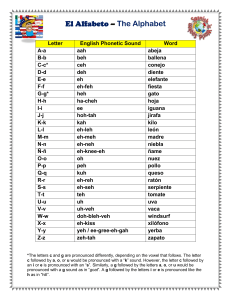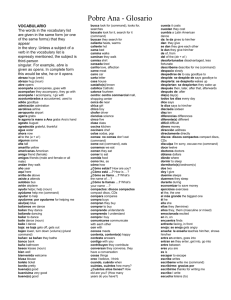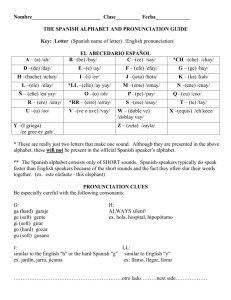MEXICO GROUP – ESPAÑOL #1
advertisement
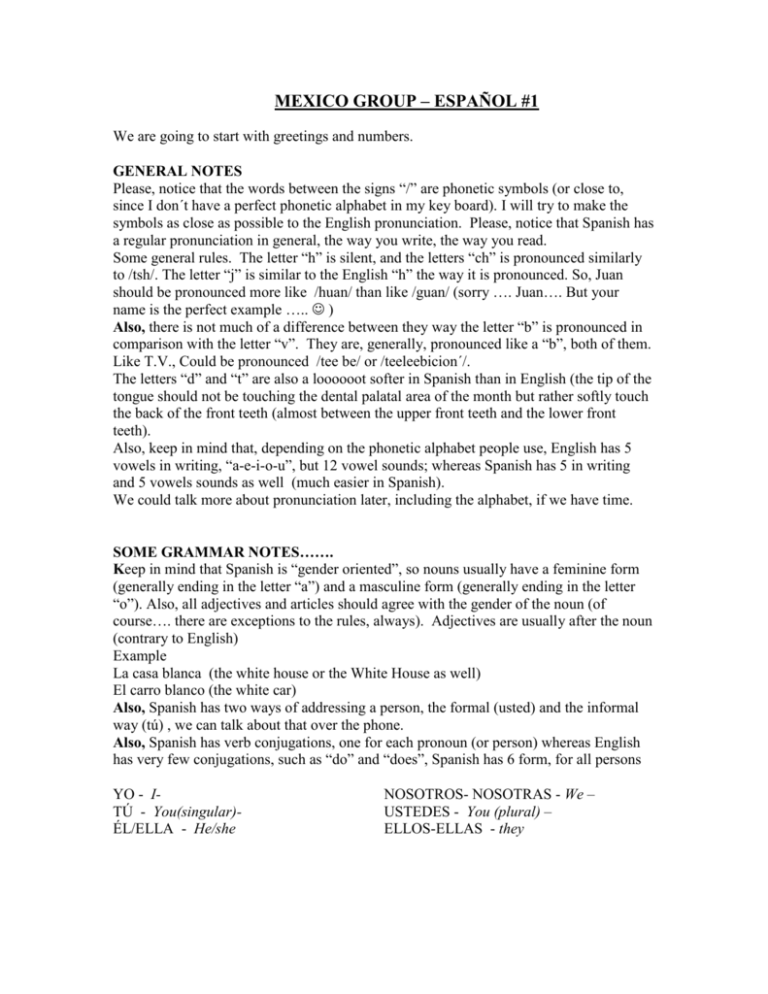
MEXICO GROUP – ESPAÑOL #1 We are going to start with greetings and numbers. GENERAL NOTES Please, notice that the words between the signs “/” are phonetic symbols (or close to, since I don´t have a perfect phonetic alphabet in my key board). I will try to make the symbols as close as possible to the English pronunciation. Please, notice that Spanish has a regular pronunciation in general, the way you write, the way you read. Some general rules. The letter “h” is silent, and the letters “ch” is pronounced similarly to /tsh/. The letter “j” is similar to the English “h” the way it is pronounced. So, Juan should be pronounced more like /huan/ than like /guan/ (sorry …. Juan…. But your name is the perfect example ….. ) Also, there is not much of a difference between they way the letter “b” is pronounced in comparison with the letter “v”. They are, generally, pronounced like a “b”, both of them. Like T.V., Could be pronounced /tee be/ or /teeleebicion´/. The letters “d” and “t” are also a loooooot softer in Spanish than in English (the tip of the tongue should not be touching the dental palatal area of the month but rather softly touch the back of the front teeth (almost between the upper front teeth and the lower front teeth). Also, keep in mind that, depending on the phonetic alphabet people use, English has 5 vowels in writing, “a-e-i-o-u”, but 12 vowel sounds; whereas Spanish has 5 in writing and 5 vowels sounds as well (much easier in Spanish). We could talk more about pronunciation later, including the alphabet, if we have time. SOME GRAMMAR NOTES……. Keep in mind that Spanish is “gender oriented”, so nouns usually have a feminine form (generally ending in the letter “a”) and a masculine form (generally ending in the letter “o”). Also, all adjectives and articles should agree with the gender of the noun (of course…. there are exceptions to the rules, always). Adjectives are usually after the noun (contrary to English) Example La casa blanca (the white house or the White House as well) El carro blanco (the white car) Also, Spanish has two ways of addressing a person, the formal (usted) and the informal way (tú) , we can talk about that over the phone. Also, Spanish has verb conjugations, one for each pronoun (or person) whereas English has very few conjugations, such as “do” and “does”, Spanish has 6 form, for all persons YO - ITÚ - You(singular)ÉL/ELLA - He/she NOSOTROS- NOSOTRAS - We – USTEDES - You (plural) – ELLOS-ELLAS - they Some useful phrases or sentences (it would be good if you keep a list of the expressions on a separte sheet so you can add more later) REPITA, POR FAVOR (repeat, please) MÁS DESPACIO, POR FAVOR (slowlier, please) GRACIAS (thank you) MUCHAS GRACIAS MÁS, POR FAVOR (more, please) MENOS, POR FAVOR (less, please) NO SÉ (I don´t know) Greetings ¡HOLA! /ola/ (informal-casual) BUENOS DÍAS /buenos dias/ (in the morning) (more formal) ¿Cómo está usted? or ¿Cómo está? (formal) /ko´mo esta´ usted ¿Cómo estás tú? or ¿Cómo estás? (informal) ko´mo estas´ tu´ ¿Cómo se llama usted? what is your name? (formal) ¿Cómo te llamas tú? (informal) /ko´mo te iamas/ not /ko´mo te lamas/ ME LLAMO ……….. ¿Y USTED? (my name is……. And yours?) MUCHO GUSTO (nice to meet you) EL GUSTO ES MÍO (nice to meet you, too) Answers Bien, gracias. ¿y usted? - or ¿y tú? (well, thanks! And you?) Muy bien, gracias. ¿y usted? or ¿y tú? (very well) ¡¡¡Muy, muy bien!!! (very, very well) Más o menos (so so) Regular /regular/ not /regiular/ as it is pronounced in English Cansada (tired- femenin form) masculine? …………………………………. Numbers 1- uno 2- dos 3- tres 4- cuatro 5- cinco 6- séis 7- siete 8- ocho 9- nueve 10- diez 11- once 12- doce 13- trece 14- catorce /katorce/ 15- quince /kince/ 16- dieciséis -dieci + séis – one word 17- diecisiete - dieci + siete 18- dieciocho 19- diecinueve 20- veinte
